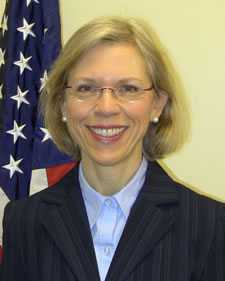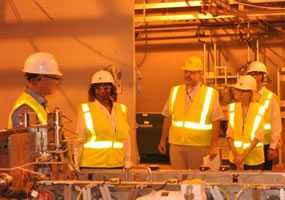CDC Women in STEM Careers - Marilyn Radke, MD, MA, MPH
Physician
National Center for Environmental Health, CDC

As a child, Marilyn Radke let her imagination roam beyond her tiny hometown in West Virginia. She caught tadpoles in the creek and studied their body systems. She read library books about blood cells. She joined the Future Medical Careers Club.
This truck driver’s daughter ended up as a doctor working at the Centers for Disease Control and Prevention to protect public health by preventing exposure to chemical weapons.
“I always wanted to be well-educated and self-supporting,” Radke says, “and I succeeded!”
Mom and Friends: ‘Stay in College’
My father, who had an eighth-grade education, made his living as a coal miner, butcher, and truck driver. My mother, who had a ninth-grade education, worked in a cigar factory in our little town of Wheeling, West Virginia. Mom earned her high school equivalency diploma when she was about 50 years old. Some people might be ashamed to admit that, but I’m proud of her. It shows she was always willing to learn.
When I was growing up, my father advised me to get a good education because that would be something no one could take away from me. My mother told me not to depend on a man to support me financially.
One summer I worked at the cigar factory in town folding boxes. I remember the women saying to me, “You stay in college, Marilyn. Don’t end up in a factory like we did.”
"I put myself through college with scholarships and work-study programs. As an undergraduate, I worked in the biology laboratory. As a graduate student, I was a counselor at the student health clinic."
Protecting America from Chemical Weapons
From a young age, I was very interested in science and health. My education led to an interesting and rewarding career as a medical officer at CDC, helping make sure the United States safely destroys our reserve of chemical weapons that date back to World War I.
People are often surprised to hear about work related to chemical weapons in the U.S. They don’t know Congress asked CDC to oversee this process.

Tambra Dunams and Marilyn Radke at a site visit to provide CDC oversight of the U.S. Army’s plans to destroy chemical weapons at the Blue Grass Chemical Agent-Destruction Pilot Plant in July 2014.
Dr. Tambra Dunams and I were honored at CDC’s 2014 Honor Awards Ceremony as recipients of the Excellence in Public Health Protection award “For the diligent Public Health oversight of the U.S. Army’s safe destruction of the chemical warfare agent stockpile at seven U.S. sites.” I represented the Division of Emergency and Environmental Health Services in discussions on public health emergency responses involving the use of an improvised nuclear device in American cities.
It is so rewarding to help protect workers and the public from chemical weapons. A few years ago at Christmas, I received a card that brought tears to my eyes. It was from a veteran I helped who was seeking treatment for a rare condition. He had been exposed to sulfur mustard—what we call mustard gas—while he was in Bari, Italy, during World War II. It was used in World War I in chemical warfare but was banned by international treaties. It is a cancer-causing agent that also causes skin and eye damage and can lead to death.
He went for a weekend swim in Bari in 1945. Later, when he saw blisters and burns on his arms and chest, he thought he was sunburned. But his symptoms didn’t go away. More than 65 years later, his skin remains sensitive to sunlight.
A poison control center referred him to CDC in 2010. I helped put him in touch with a skin doctor in the Veterans Affairs Medical Center near his hometown, where he is being treated.
Treating him showed me how important our work is. I’m sure there are many times in our work with larger populations that we touch people like this, and we just don’t know it.
Advice to Girls and Young Women
- Believe in your ability.
- Find mentors who can point you in the right direction.
- Persist with hard work until you succeed.
I’ve been lucky to have good mentors and role models in my life. One of them was my physics professor in college. She helped me decide on my major and what to study in graduate school. She helped me personally, too, taking me under her wing almost as part of the family when I couldn’t get back home to West Virginia very often.
People have been so generous with me, and I believe in paying it forward.
- Page last reviewed: April 27, 2015
- Page last updated: April 27, 2015
- Content source:


 ShareCompartir
ShareCompartir